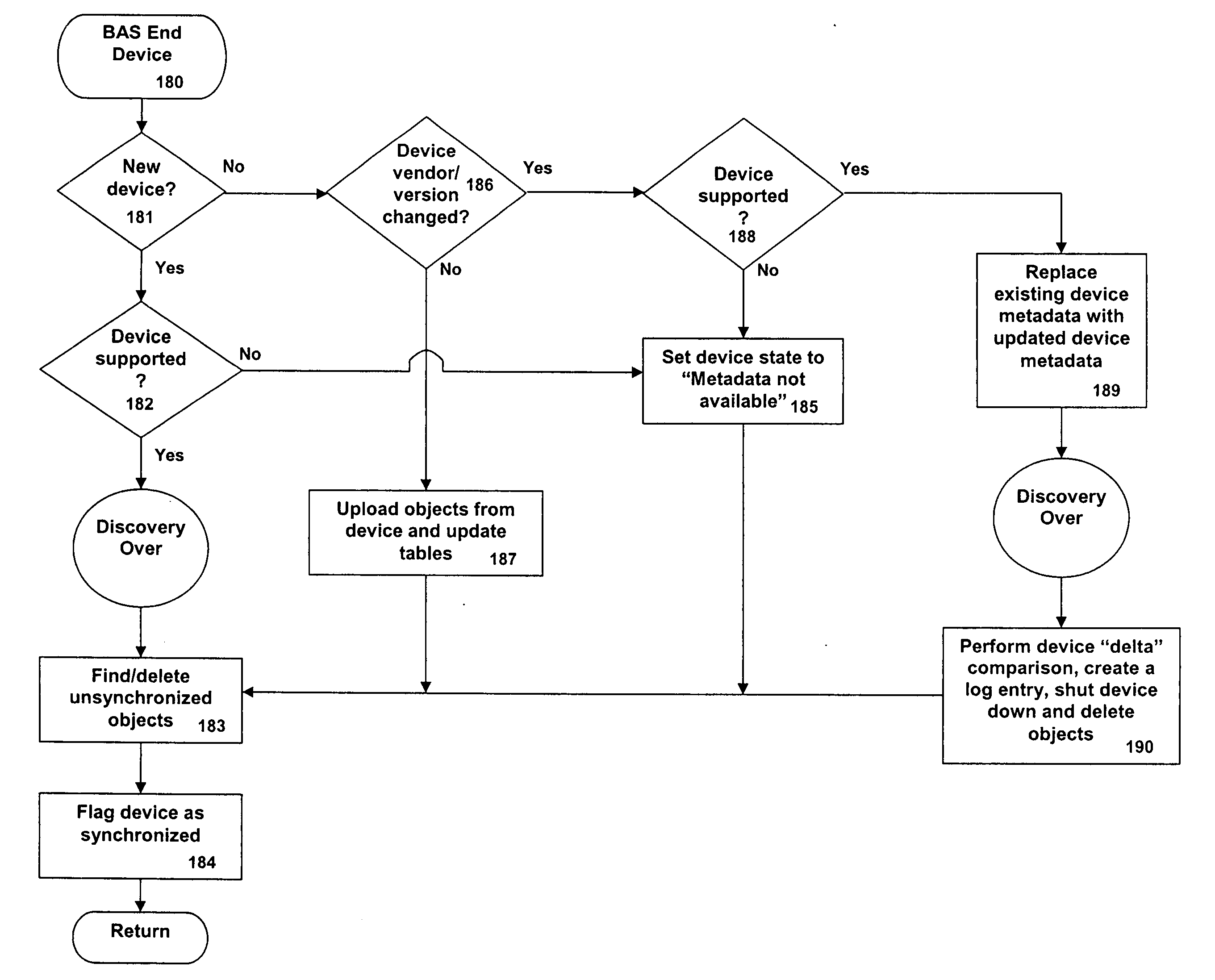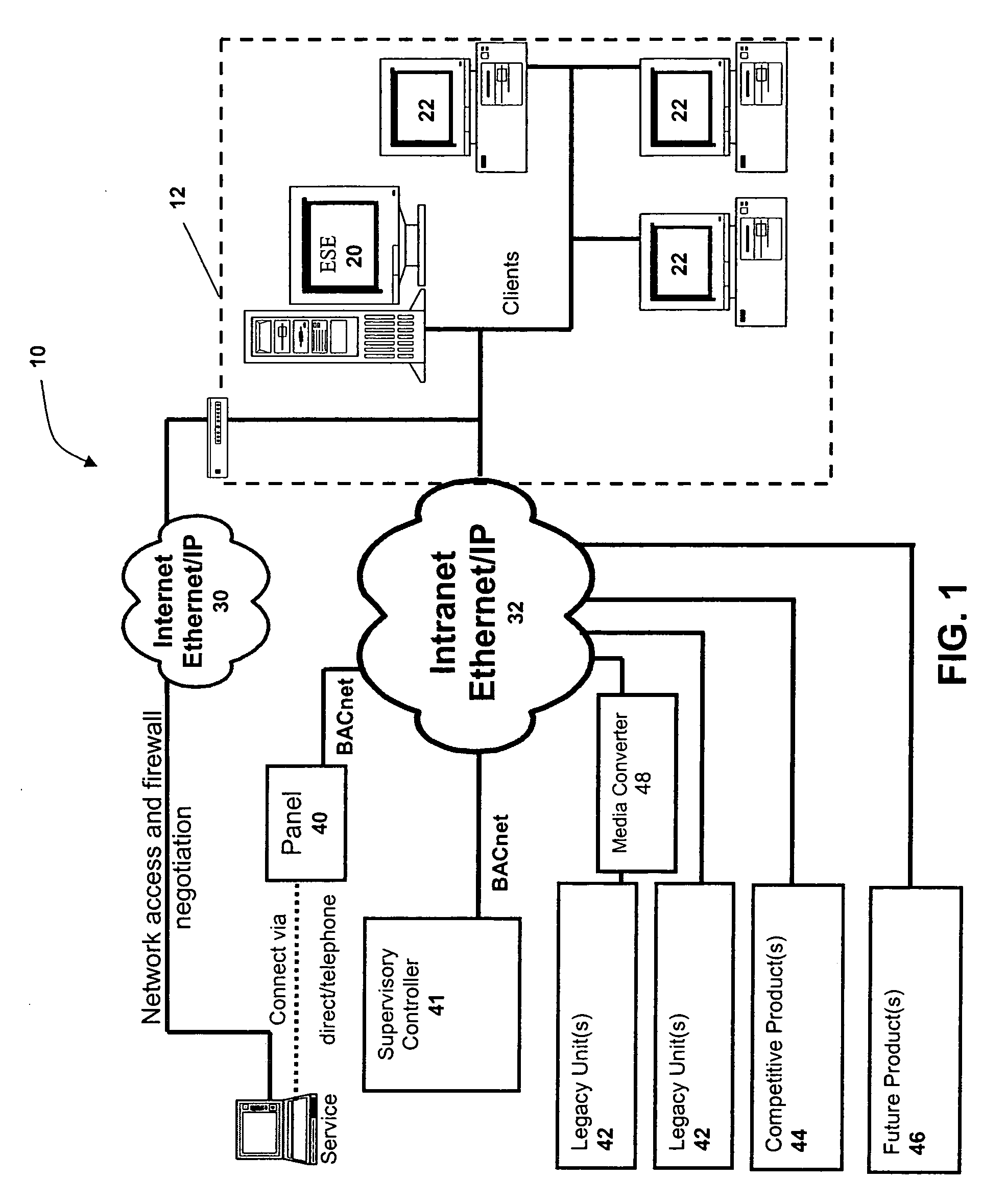Building automation system data management
a technology for building automation and data management, applied in data switching networks, programmatic control, instruments, etc., can solve the problems of complex customization, time-consuming installation, and often requiring extensive customization, and contribute to the costliness and time-consuming installation of such systems
- Summary
- Abstract
- Description
- Claims
- Application Information
AI Technical Summary
Benefits of technology
Problems solved by technology
Method used
Image
Examples
Embodiment Construction
[0031] The systems and methods of the invention can effectively prioritize and manage data and information within a locally or widely distributed building automation system (BAS), from a space or building level to an enterprise level, encompassing virtually any structure, cluster, campus, and area in between. The systems and methods are particularly suited for a dynamically extensible and automatically configurable BAS and architecture, such as is disclosed in related and previously identified co-pending U.S. patent application Ser. No. 11 / 208,773, entitled “Dynamically Extensible and Automatically Configurable Building Automation System and Architecture,” and the previously identified co-pending U.S. patent application Ser. No. 11 / ______, filed Dec. 22, 2005, entitled “Building Automation System Facilitating User Customization”; U.S. patent application Ser. No. 11 / ______, filed Dec. 22, 2005, entitled “Building Automation System Facilitating User Customization”; U.S. patent applica...
PUM
 Login to View More
Login to View More Abstract
Description
Claims
Application Information
 Login to View More
Login to View More - R&D
- Intellectual Property
- Life Sciences
- Materials
- Tech Scout
- Unparalleled Data Quality
- Higher Quality Content
- 60% Fewer Hallucinations
Browse by: Latest US Patents, China's latest patents, Technical Efficacy Thesaurus, Application Domain, Technology Topic, Popular Technical Reports.
© 2025 PatSnap. All rights reserved.Legal|Privacy policy|Modern Slavery Act Transparency Statement|Sitemap|About US| Contact US: help@patsnap.com



